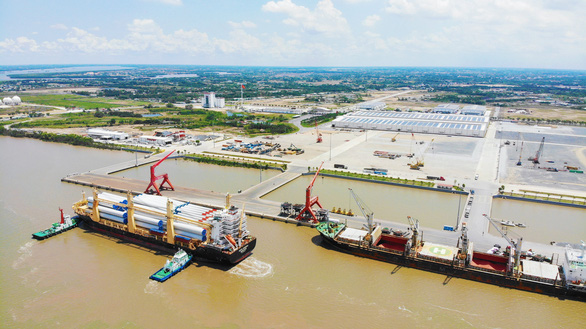
HCM CITY – With more than 14,800km waterways, the Mekong Delta has great potential to develop port and logistics infrastructure, but it has yet to take advantage of it with the existing system lacking intra-regional connectivity.
Logistics enterprises in the delta only offer shipping, warehousing, customs procedures, and local transportation services, and have not integrated to create a logistics chain.
Investment in transport infrastructure is key to boosting exports of local agricultural and seafood products, in which the region has enormous potential, according to experts.
Now the exports face bottlenecks like scattered transport infrastructure, which increase transport costs and affect their competitiveness.
According to the Việt Nam Chamber of Commerce and Industry (VCCI) and the Fulbright School of Public Policy and Management, logistics activities in the Mekong Delta remain largely unplanned.
More than 85 per cent of its ports are scattered with each having a capacity of less than 10,000 tonnes of cargo a year.
It also lacks logistics centres, warehouses, and container yards, and companies have to send their products to HCM City for sterilising and irradiating, all of which increase costs.
The delta’s biggest limitation is the lack of a deep-water port to ship goods, experts said. It is the largest producer and exporter of seafood, fruits and rice in the country.
Now all exports have to be shipped to transit ports in HCM City and Bà Rịa-Vũng Tàu Province, which adds to indirect costs, reducing the competitiveness of Việt Nam's seafood.
Empty containers must be transported from HCM City to the Mekong Delta, and then they return with goods to ports in the city. – VNS
Xem thêm: lmth.deppat-eb-ot-stiaw-strop-atled-gnokem-fo-laitnetop/9306611/ymonoce/nv.swenmanteiv